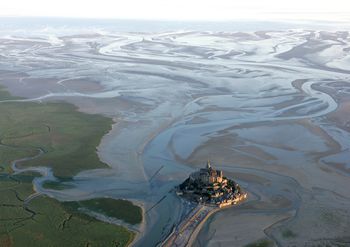Coastal morphodynamics
From Coastal Wiki
Revision as of 11:39, 29 March 2021 by Dronkers J (talk | contribs)
Definition of Coastal morphodynamics:
The mutual interaction of coastal morphology with hydrodynamic agents (tides, currents, waves). This interaction takes place through sedimentation, erosion and sediment transport processes.
This is the common definition for Coastal morphodynamics, other definitions can be discussed in the article
|
Notes
Tides, currents and waves adapt to constraints imposed by the morphology of a coastal system (e.g., delta, estuary, beach, etc.). The morphology of a coastal system adapts to the tides, currents, waves to which it is exposed. This mutual adaptation, which is always highly nonlinear, generates morphological patterns, such as channel meanders, tidal flats, ebb tidal deltas, nearshore sandbars, beach berms, sand ridges, ripples, etc. As a result, the large-scale coastal morphology develops into a slowly evolving morphodynamic equilibrium state in which smaller morphological patterns evolve in a quasi-cyclical (usually non-deterministic) manner at much smaller timescales[1].
Related articles
- Stability models
- Rhythmic shoreline features
- Wave ripple formation
- Morphology of estuaries
- Tidal asymmetry and tidal basin morphodynamics
- Wave-dominated river deltas
- Process-based morphological models
- Estuarine morphological modelling
References
- ↑ Dronkers, J. 2017. Dynamics of Coastal Systems. World Scientific Publ. Co, Singapore, 740 pp.
